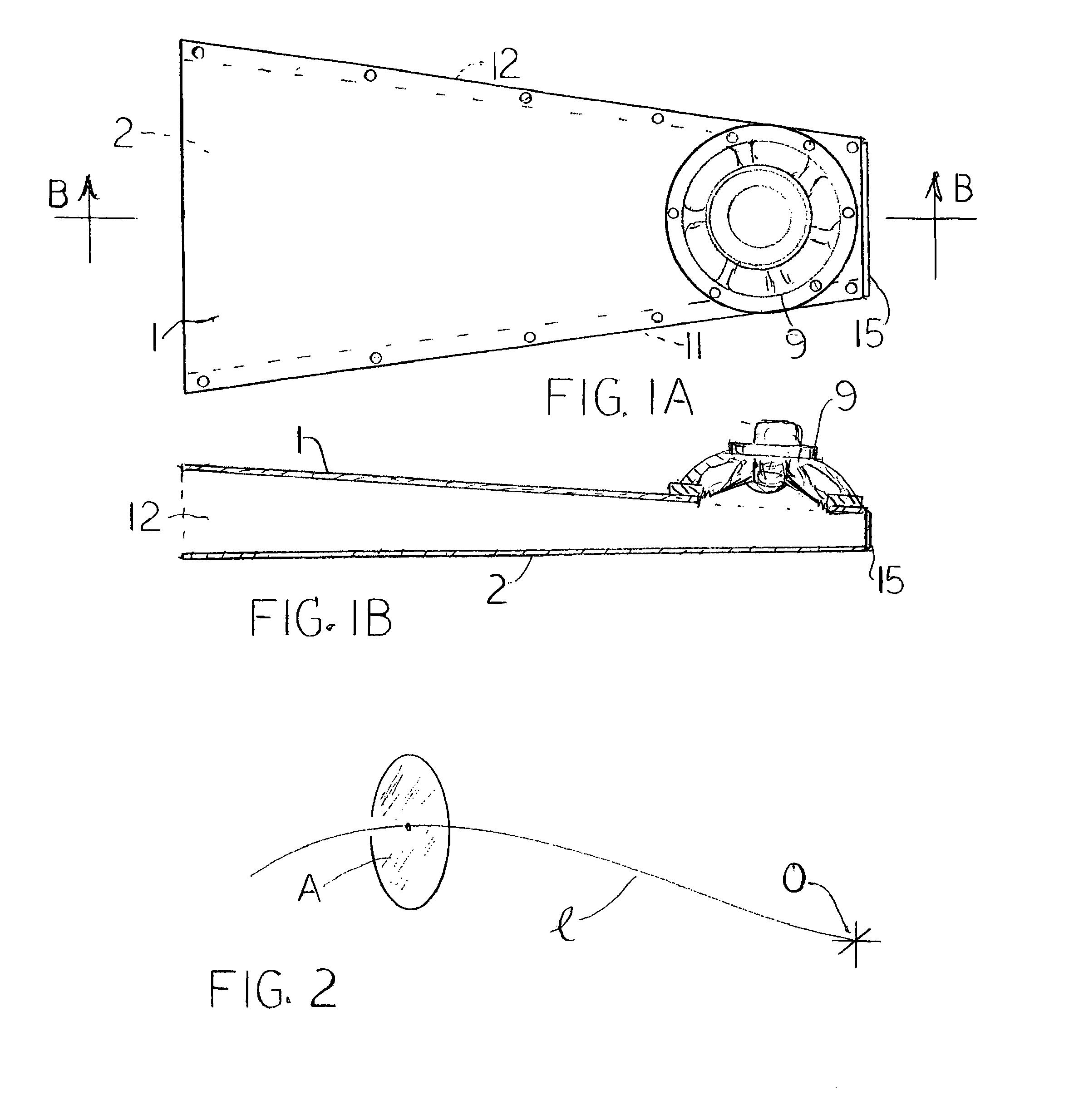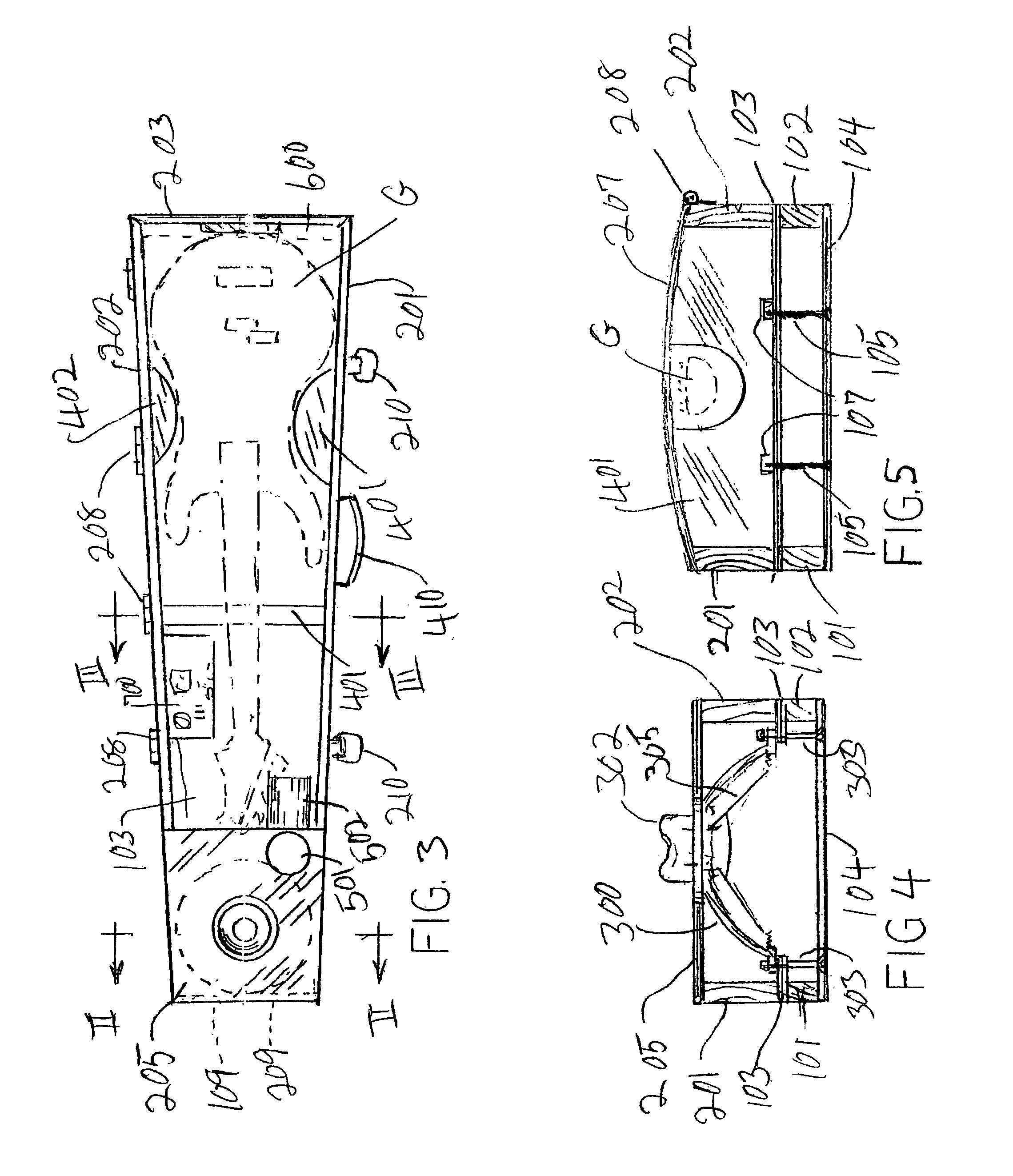Transverse waveguide
a waveguide and waveguide technology, applied in the direction of transducer details, electrical transducers, electrical apparatus casings/cabinets/drawers, etc., can solve the problems of high acoustic loading of conical horns, insufficient bass of horns, and inability to produce adequate bass, so as to reduce noise and out-of-phase sound, reduce noise, and heat dissipation
- Summary
- Abstract
- Description
- Claims
- Application Information
AI Technical Summary
Benefits of technology
Problems solved by technology
Method used
Image
Examples
Embodiment Construction
[0035]FIGS. 1A and 1B show an example of the invention. The exemplary illustrated cabinet comprises five pieces of wood: an upper plate 1 of, e.g., quarter-inch-thick “Baltic birch” plywood; a similar lower plate 2 that is congruent to the upper plate 1; a left-side piece of, e.g., ¾-inch thick pine board, 11, located between the plates 1 and 2 and immediately adjacent to side edges of the plates; a similar right-side board 12 that is congruent to the board 11 and is similarly placed on the other side of the cabinet; and an end plate 15. All of these optionally wooden parts can be fastened together with glue and / or screws. In the upper plate 1, but not in the lower plate 2, is an un-numbered generally round hole to accommodate a loudspeaker 9, which is placed and fastened over the hole. The loudspeaker axis is transverse to the widest dimensions of the waveguide, which is the reason for the name “transverse waveguide.” This configuration greatly reduces the size. Recently, woofers h...
PUM
 Login to View More
Login to View More Abstract
Description
Claims
Application Information
 Login to View More
Login to View More - R&D
- Intellectual Property
- Life Sciences
- Materials
- Tech Scout
- Unparalleled Data Quality
- Higher Quality Content
- 60% Fewer Hallucinations
Browse by: Latest US Patents, China's latest patents, Technical Efficacy Thesaurus, Application Domain, Technology Topic, Popular Technical Reports.
© 2025 PatSnap. All rights reserved.Legal|Privacy policy|Modern Slavery Act Transparency Statement|Sitemap|About US| Contact US: help@patsnap.com



